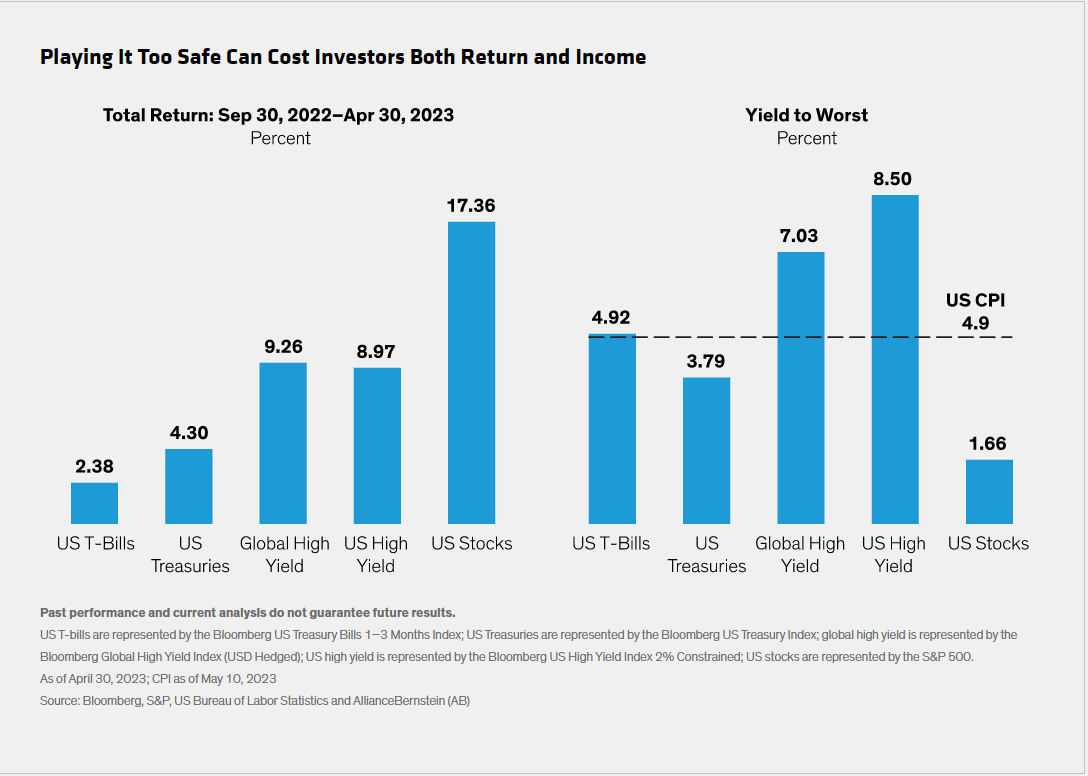
Parking your fixed-income assets in cash may seem like a safe choice in today’s volatile investing environment, but it’s actually a risky proposition. Here are three reasons why sitting on the sidelines can be a dangerous game.
First, the opportunity cost is huge. While you’re rolling Treasury bills and waiting for the right time to reenter the market, you’re losing out on the daily income accrual provided by higher-yielding bonds. Today, the US high-yield market offers yields of 8.5%, on average, compared to one- to three-month T-bills at 4.9%. Remember, fixed-income returns are mainly derived from earning income with the passage of time.
Second, you can’t keep up with inflation. Even though T-bills are yielding more than they have in a long time, they still struggle to keep up with inflation. Today, T-bills yield 4.9%—the same as US headline inflation and well below inflation levels in Europe and elsewhere.
Third, timing reentry is virtually impossible, even for the pros. We’ve already established that while you’re waiting for a downturn to unfold, you’re losing out on income. And there’s no telling how long that wait will be. But that’s not all. Because high-yield downturns tend to be very short-lived, you also risk missing the rebound.
High-yield rebounds tend to be both swift and outsized. On average, since 2000, US high yield rebounded from peak-to-trough losses exceeding 5% in just five months—and as few as two. Over the 12 months following such losses, the US high-yield market returned 22% on average. Reluctant investors missed out.
The bottom line? The odds of meeting your investment goals over any reasonable horizon are much poorer when you’re not fully invested. Alternative approaches to income investing may be less volatile than you’d think.
Related: Will the Future Be More Volatile for Equity Investors?

